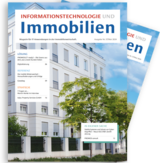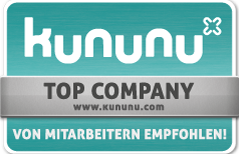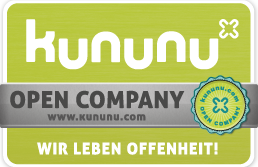Time gained thanks to simplified business planning based on SAP® BusinessWarehouse-IP

In practice, planning of investments is among the most complex and time-consuming tasks in the scope of housing companies’ business planning. This is primarily because it affects various different areas of the company and changes to the investment planning frequently also have an impact on a host of other plans within the company. It therefore makes perfect sense to reduce the time and personnel expense required for this with relevant software solutions and at the same time speed up the provision of a viable decision-making basis for the relevant investment and planning decisions.
To see the immense potential that can be tapped in this manner, let us take a look at the practical example of the implementation of a simplified business planning solution developed by PROMOS on the basis of SAP® Business Warehouse-IP at ABG FRANKFURT HOLDING Wohnungs- und Beteiligungsgesellschaft mbH. This company is among the leading housing companies in the Rhine–Main area and, with an inventory of around 51,000 apartments, provides housing for almost a quarter of Frankfurt’s population. For the coming five years alone, the Group-wide investment volume comes to a total of around two million euros.
In the past, the company had already used an ERP system from SAP. However, for the purposes of investment planning it was necessary to export the required data from the ERP system in the form of Excel files and provide these files to the individual planners. Subsequently, the Controlling team had to consolidate the results of the work, manually calculating and entering the effects of the planned investments on other plans in the scope of business planning. Through the implementation of integrated business planning based on SAP® Business Warehouse-IP, the company aimed to reduce the high expenses in terms of time and personnel associated with this procedure.
The
new solution was implemented in three phases. First, profit and loss planning
was implemented based on accounts and a profit centre. The figures could be
entered by hand or imported. In the next step, separate investment and target
rent planning was provided. The results of this planning had to be transferred
to the P&L planning.
Finally, in the third step, a fully integrated solution was provided, allowing all the sub-plans to be integrated into the overall planning. The crucial advantage of this kind of solution compared with all the previous levels is that every time new information is entered regarding an investment, the impact that will result from this can be seen throughout the entire process. This applies to the purchase of land or buildings just as much as to the modernisation of a property or planning of a new building project. All plans created in the scope of the business planning are automatically recalculated – up to the planned profit and loss calculation, planned balance sheet and planned cash flow statement. This is all possible with a planning horizon of five years, meaning a strong basis for decision-making can quickly be provided not only for short-term business planning, but also medium-term plans. This applies at the level of individual projects and property companies as well as at the level of the entire Group. Inventory and investment planning are thus no longer two different areas that need to be agreed and coordinated, but have been merged in a single system.
This allows a fully automated target/actual comparison for every planner throughout the entire company. Instead of spending their time gathering and preparing data, the employees in question can now pay more attention to data analysis and the actual planning. For the company management, too, this results in a fundamental improvement and enhancement of the information and decision-making basis. For example, continuous adjustment of the planned balance sheet to new planning stages in Excel was usually avoided until now, as it would have involved a great deal of effort. By contrast, in the new, fully integrated solution, creating the updated planned balance sheet is just a small work step that is already included in the process automatically.
Overall, the company is able to save around two months of planning time with the implemented software solution. This means that the company can act faster, and also frees up time and personnel resources, which can then be used for other purposes. In particular, it is now possible to respond to required changes to the investment planning quickly and easily. Previously these could only be implemented with a great deal of effort. Now, the change to the investment in question simply needs to be entered in the system. All other changes and effects are then reflected automatically in the system.
A further
benefit of the new solution is the decreased susceptibility to errors, as fewer
processing steps are required compared with the previous procedure and there
are thus fewer sources of error. In addition, the solution provides a high
degree of transparency, as many users can view the processed data at the same
time. The fact that all entries are logged and all changes can be traced also
results in high data security. For the users, the new solution is extremely
operator friendly. For example, the interface is structured in a similar way to
Excel but the required actual data is automatically transferred to the user and
no longer has to be entered manually. Based on the positive experiences, the
company plans to continue developing the current solution and to add further
components, including integrated liquidity planning.


